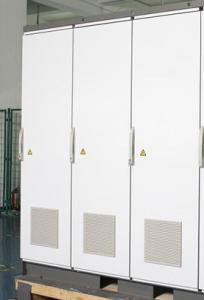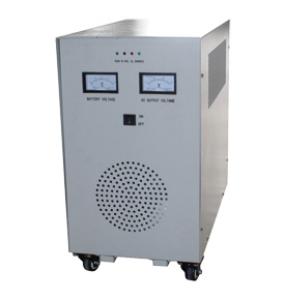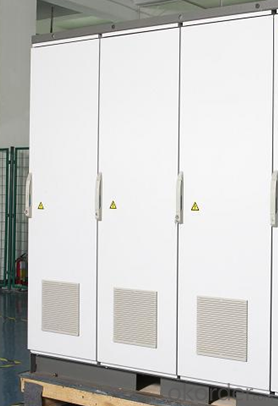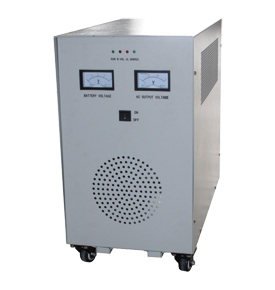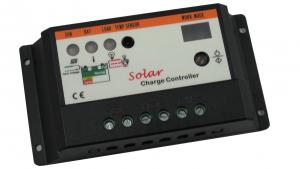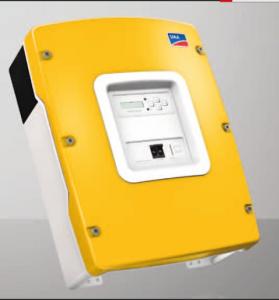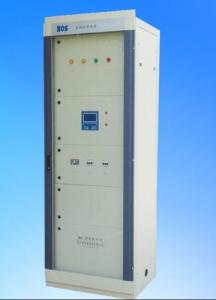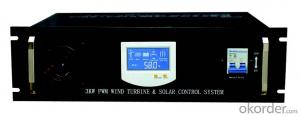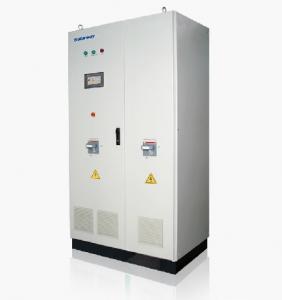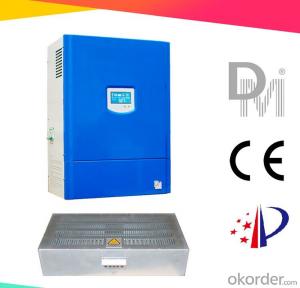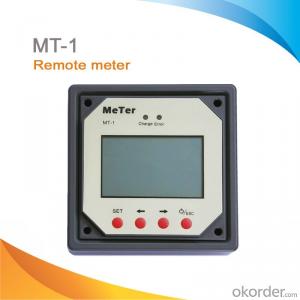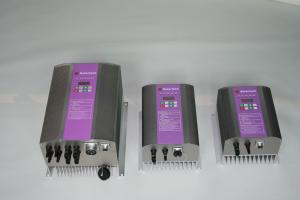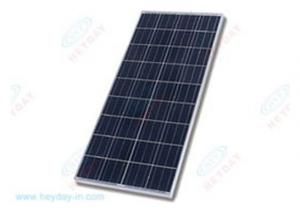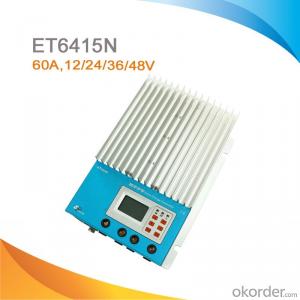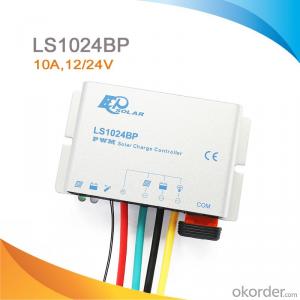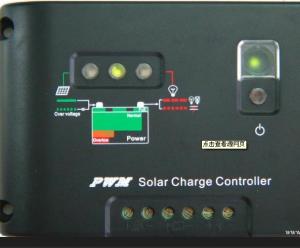Buy Solar Controllers:PV Off-Grid Inverter and Controller Hybrid GNS-0.3KB
OKorder Service Pledge
OKorder Financial Service
You Might Also Like
Description;
CNBMSOLAR is a world-leading and Vertical integrated manufacturer of high-performance with Silicon,
Wafer, Cells, Modules, which convert sunlight into electricity for residential, commercial, and utility-scale
power generation.
The capacity of CNBMSOLAR is reach to 1GW, and make sure each year our shipment capacity is more
Than 700-800MWs, at the same time, we have set up the largest solar power station with our partner
in Ukraine.
CNBM is a Quality + Service oriented company with“Excellence at Each Step” approach, composed of
the finest components from TUV and IEC-certified partners around the world, CNBM modules consistently
undergo a variety of trials at the company’s Test & Development Centre, ensuring peak performance
capabilities. The company is committed to develop and provide the world with clean and renewable energy
to ease the energy shortages as well as human kind’s impact on the environment.
Data:
Technical specifications |
| |
Model | GNS-0.3K20B | |
Rated Capacity(KVA) | 0.5 | |
DC Input | Rated Voltage(VDC) | 12 |
Low Voltage(VDC) | 10.8 | |
Low Voltage Resume (VDC) | 13.2 | |
Load Overvoltage(VDC) | 17 | |
Overvoltage Resume(VDC) | 16.5 | |
PV Input | Rated Current on charging(A) | 20 |
Charge Loop | 1 | |
Overcharge protection(VDC) | 14.4 | |
Overcharge Resumption(VDC) | 14.2 | |
Anti lightning | varistor lighting protection | |
Grid input | No grid transfer function | |
Rated capacity | Output Waveform | sinewave |
Overload ability | 120% 1min | |
Output voltage(VAC) | 220±3% | |
Output frequency(Hz) | 50±0.1% | |
THD | ≤3℅(THD) | |
Dynamic Response(0~100%) | 5% | |
Efficiency | ≥80% | |
Continous running time | Continuous operation | |
Display | LCD/LED/Meter | |
Protection | Overcharge, overdischarge, overload, short circuit, reverse polarity, internal overheated protections,etc | |
Protection class | IP20 | |
Environment | Noisy | ≤50(dB/m) |
Operating temperature range | -10~+50(℃) | |
Storage temperature range | -25~+55(℃) | |
Operating humidity | 0~95%(non-condensing) | |
Max.altitude(above sea level) | ≤5000(m) | |
Product Dimension (mm) | 520*273*451 | |
Weight(kg) | 80kg | |
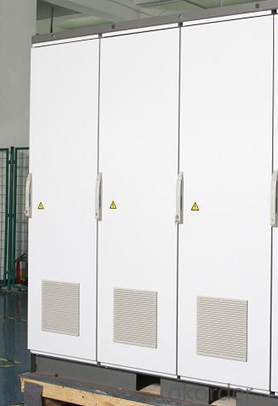
FAQ:Could you introduce more about CNBM
CNBM Group is short for China National Building Materials Group Corporation, which is established in 1984 with approval from the State Council
CNBM Group is the largest comprehensive building materials industry group in China
The Group has a total asset of over RMB 360 billion, more than 180,000 employees and 17 subsidiaries
- Q: Can a solar controller be used in a solar-powered satellite system?
- Yes, a solar controller can be used in a solar-powered satellite system. A solar controller helps regulate the charging and discharging of the batteries in a solar system, ensuring optimal performance and protection against overcharging or deep discharging. In a solar-powered satellite system, the solar controller would play a crucial role in managing the power generated by the solar panels and efficiently storing it in the batteries for use during periods of low sunlight or high power demands.
- Q: How does a solar controller handle battery desulfation?
- A solar controller handles battery desulfation by periodically applying a high voltage or pulse to the battery during the charging process. This helps to break down and remove sulfate build-up on the battery plates, improving its overall performance and extending its lifespan.
- Q: What is the maximum input current for a solar controller with an LCD display?
- The maximum input current for a solar controller with an LCD display would depend on the specific model and its design specifications. It is recommended to consult the product manual or contact the manufacturer for accurate information regarding the maximum input current for a particular solar controller.
- Q: Can a solar controller be used with a solar-powered electric vehicle charging station for public use?
- Yes, a solar controller can be used with a solar-powered electric vehicle charging station for public use. A solar controller, also known as a charge controller, is an essential component of any solar power system. It regulates the voltage and current from the solar panels to ensure optimal charging of the batteries or power storage system. In the case of a solar-powered electric vehicle charging station, the solar controller plays a crucial role in managing the power generated by the solar panels. It monitors the incoming solar energy and adjusts the charging process to match the demand of the electric vehicles connected to the charging station. This helps prevent overcharging or undercharging of the vehicles' batteries, ensuring efficient and safe charging. Additionally, a solar controller also provides protection against overvoltage, short circuits, and reverse polarity, safeguarding the charging station and the connected electric vehicles from potential electrical damage. By using a solar controller in conjunction with a solar-powered electric vehicle charging station, it becomes possible to utilize renewable energy from the sun to charge electric vehicles, reducing reliance on fossil fuels and minimizing carbon emissions. This promotes sustainable transportation and contributes to the overall goal of transitioning to a greener and more environmentally friendly future. In summary, a solar controller can indeed be used with a solar-powered electric vehicle charging station for public use, enabling efficient, safe, and eco-friendly charging of electric vehicles.
- Q: How do I know if my solar controller is working properly?
- To determine if your solar controller is functioning correctly, you can perform a few simple checks. Firstly, ensure that the controller's LED indicators are lit and displaying the appropriate status or error codes. Additionally, monitor the battery voltage and ensure the controller is charging it to the recommended levels. You can also examine the controller's connection terminals and wiring for any signs of damage or loose connections. Lastly, consult the controller's user manual for specific troubleshooting steps or contact the manufacturer for further assistance if needed.
- Q: What is the maximum discharge efficiency of a solar controller?
- The maximum discharge efficiency of a solar controller refers to the percentage of energy that can be extracted from the battery bank by the controller. This efficiency can vary depending on the specific model and technology used, but generally, high-quality solar controllers can achieve discharge efficiencies of around 95% or higher.
- Q: Can a solar controller be used with solar panels of different colors?
- Solar panels of different colors can indeed be used with a solar controller. The functionality of the solar controller remains unaffected by the color of the panels. The primary objective of a solar controller is to regulate the charging process of batteries linked to the panels. It carefully monitors the voltage and current derived from the panels and ensures the batteries are charged in the safest and most efficient manner. The color of the solar panels merely pertains to aesthetics and has no bearing on performance or compatibility with the solar controller.
- Q: Can a solar controller be used with solar panels that are connected in parallel?
- Yes, a solar controller can be used with solar panels that are connected in parallel. In a parallel connection, the positive terminals of all the solar panels are connected together, and the negative terminals are also connected together. This configuration allows for the combined voltage output of the panels while maintaining the same current output. A solar controller is used to regulate the charging process of batteries connected to the solar panels. It helps to prevent overcharging and damage to the batteries. The solar controller measures the voltage and current from the solar panels and adjusts the charging process accordingly. Whether the solar panels are connected in series or parallel, the solar controller can still monitor and regulate the charging process effectively. It will measure the combined voltage and current from the parallel-connected panels and adjust the charging parameters accordingly. However, when connecting solar panels in parallel, it is important to ensure that the solar controller and the wiring used can handle the increased current. The total current output of the parallel-connected panels will be the sum of the individual panel currents, so the wiring and solar controller should be able to handle this increased load. In conclusion, a solar controller can be used with solar panels that are connected in parallel. The solar controller will still effectively regulate the charging process while ensuring the optimal performance and longevity of the batteries.
- Q: Can a solar controller be used in a solar-powered emergency backup system?
- Yes, a solar controller can be used in a solar-powered emergency backup system. A solar controller helps regulate the amount of charge going into the batteries and prevents overcharging, which is essential in maintaining the health and longevity of the batteries. In an emergency backup system, the solar controller ensures that the batteries are charged efficiently and effectively, providing a reliable source of power during power outages or emergencies.
- Q: Can a solar controller be used with solar panels that are connected to a solar security system?
- Solar panels connected to a solar security system can indeed be used with a solar controller. The solar controller plays a vital role in a solar power system by regulating the voltage and current that flows between the solar panels and the battery or load. Its main function is to optimize the efficiency of the solar panels while safeguarding the battery against overcharging or undercharging. In the context of a solar security system, the solar controller takes charge of managing the power generated by the solar panels and supplying it to the security system or charging the backup battery. By doing so, it ensures a stable power supply for the security system, even in low light conditions or periods of high power consumption. Consequently, it is highly recommended to use a solar controller alongside solar panels in any solar-powered application, including solar security systems.
Send your message to us
Buy Solar Controllers:PV Off-Grid Inverter and Controller Hybrid GNS-0.3KB
OKorder Service Pledge
OKorder Financial Service
Similar products
Hot products
Hot Searches
Related keywords
